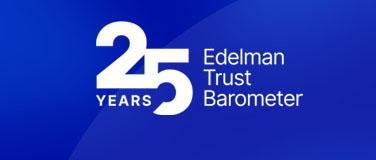A 2018 study found that 70 percent of communications professionals believe the industry will change significantly over the next five years — but significant change is already upon us. Technology has and continues to disrupt the media landscape. According to Pew Research, newspapers lost 45 percent of employees between 2008 and 2017, and this trend is observed across the entire media landscape; there has been a nearly 25 percent decline in jobs across the board in newspapers, radio, cable, broadcast news and digital native outlets.
Additionally, for corporations of all sizes, a reputational crisis can erupt at any moment, but only 36 percent of in-house communications professionals believe their companies are prepared to operate in today’s crisis-prone climate, according to USC Annenberg. Teams are understaffed and underfunded, with budget growth slowing year over year. This lack of investment puts downward pressure on CCOs trying to modernize their capabilities, limiting their ability to focus on measurement and provable business impact. They’re told to do more with less, putting their teams at great risk of burnout.
What’s more, the news cycle has never been shorter and more complex. Despite the whirlwind of the Trump news cycle, communications professionals are still expected to break through. The transformation of media presents a deep challenge for communicators working to ensure their messages are being heard.
Without evolving new ways of working, many communications teams simply can’t adapt to keep up with the pace of change – and without adapting, they will ultimately fall behind. But there is a modern solution that can help drive efficiency and enable communication functions to keep up with the rapid change: Agile.
Beyond Tech: The Evolution of Agile
At its core, Agile is a problem-solving approach that emphasizes fluidity and change over rigid structures and timelines. Made famous by companies like Google, Netflix and Spotify, it originated as a project management approach for software development in the early 2000s. Agile has since spread rapidly across the enterprise — business functions like operations and even HR are now reaping the benefits of Agile values and principles.
Zappos, the online shoe and clothing retailer, worked with Agile co-creator Jeff Sutherland to implement Agile into its organization, transforming it into a best-in-class model of excellence in customer service. Other companies like ING, Bank of America, Tesla and State Farm are all adopting Agile to increase speed and business dexterity at scale.
For the communications function, Agile enables teams to increase speed and efficiency, while also opening lines of communications across disciplines. Real-time social media conversations, reacting to a campaign or rapid response in a crisis — there are many relevant and practical applications for Agile.
Three Tips for Implementing Agile Now
Incorporating Agile principles can help communications teams be faster and nimbler, and break down silos. Try one of these helpful tips to start, adding others to realize the potential of Agile for your team:
- React in real time: Fifteen-minute daily “standups” allow teams to quickly prioritize initiatives. Standing in a circle, team members answer three questions: What did you accomplish yesterday? What do you plan to work on today? What’s in your way preventing you from moving forward (known as “blockers”)? These daily touchpoints are effective, iterative and incremental ways to proactively plan for a campaign, manage a sudden crisis or quickly course correct a media outreach plan.
- Break down silos: By definition, Agile teams include people from different facets of a function. This multifunctional team approach provides a unique formula for collaboration and creativity, delivering greater value than monofunctional teams. Agile teams have a comprehensive view of activities, can anticipate unforeseen consequences from decisions and can ensure consistency between internal and external teams. Ideally, Agile teams include members from external (media relations, public affairs, investor relations, crisis, social media, executive visibility) and internal (executive comms, employee engagement, HR comms) roles.
- Scrum it: In today’s digitally dominated world, a physical task list can be refreshingly satisfying, especially when you get to cross things off! Scrum boards are used in standups to work through and prioritize to-do lists and include three columns: Activities not started (known as “backlog”); Activities in progress; and Completed activities. Start with Post-it notes on a wall; they’re a clearly visible way to map out priorities and track deliverables. Assign a team member to act as a “Scrum Master,” who can facilitate and be the glue for your newly Agile team.
By using these simple Agile techniques, communications teams can accelerate their work and pivot in real time.
Commit to the Practice
Realizing the full benefits of Agile requires some adjustments in work habits, starting with a shift in mindset and thinking. Agile tends to thrive at companies where feedback and open communication are encouraged. Closed and heavily siloed organizations often struggle with effectively implementing Agile. Putting Agile into action may also require some organizational design change within your team to enable cross-functional teams that can work through scrum boards during standups.
Jonathan Jordan is senior vice president, Employee Experience and Business Transformation lead, Corporate & Public Affairs, Los Angeles.
Jill Miskevics is account supervisor, Corporate & Public Affairs, Los Angeles.
Grace Gill Qayoumi is assistant account executive, Corporate & Public Affairs, Los Angeles.




